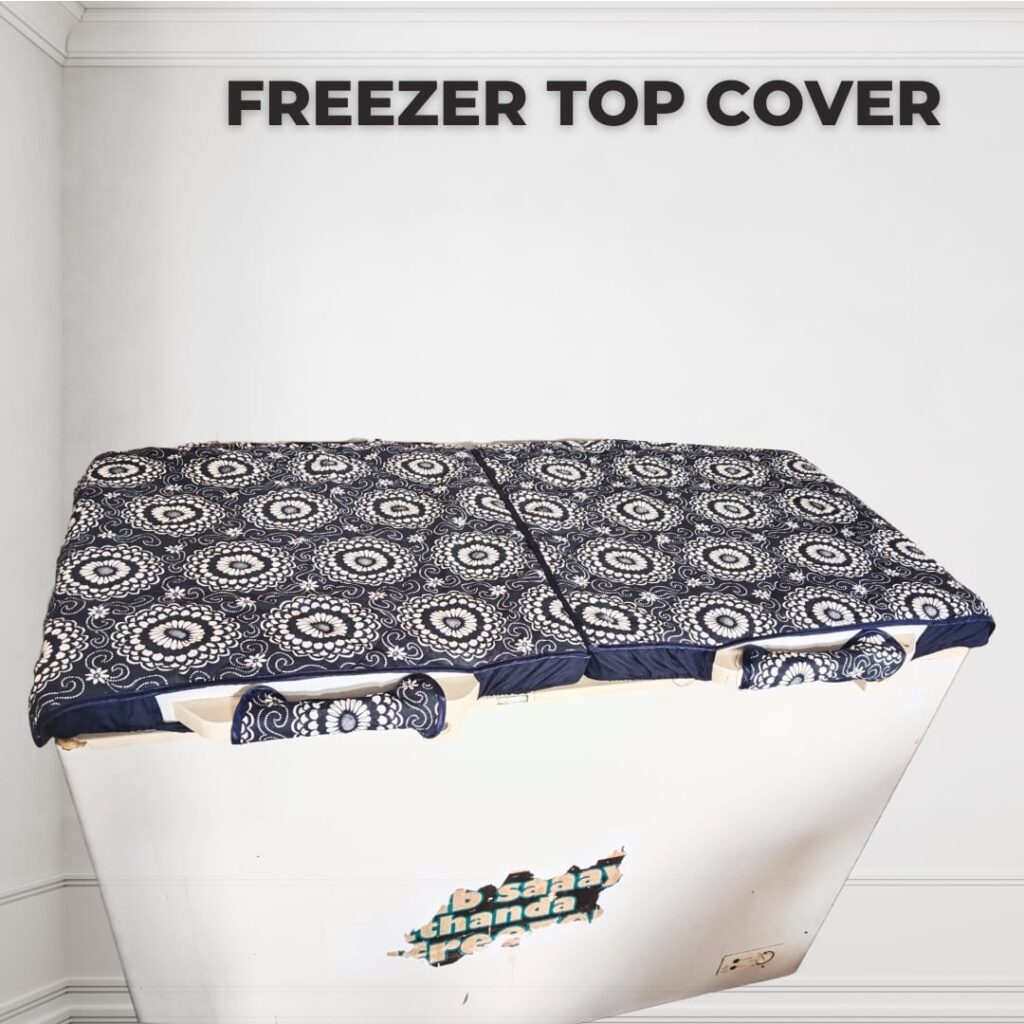Freezer Top Cover – Deep Dive
✅ What is it?
A Freezer Top Cover is a protective or functional surface put on top of a freezer, most often a chest freezer (horizontal model). It may be:
Options for freezers include a built-in lid, a custom or aftermarket cover for protection, insulation, and aesthetics, or a countertop conversion for smaller spaces.
🔍 1. Types of Freezer Top Covers:
🔹 A. Factory Lid or Built-In Cover:
Standard with chest freezers. Made of the same material as the freezer body. Insulated to retain chilling efficiency. Hinged and counterbalanced for smooth opening.
🔹B. Protective Top Cover:
This third-party or DIY item covers the freezer lid and protects it from dust, spills, dogs, sunlight, and mechanical damage. It may be soft (cloth, vinyl) or rigid (wood, plastic).
🔹 C. Functional or decorative countertop cover:
Used in small households to transform freezer tops into counter space. Typically made of wood, butcher block, or laminated board. * Can be detachable or hinged. The underneath may be made of foam or silicone cushions to prevent direct contact with the freezer.
🧵 2. Common Materials Used:
| Cover Type | Materials | Features |
|---|---|---|
| Factory Lid | Steel with insulation | Durable, airtight |
| Protective Cover | Vinyl, fabric, waterproof nylon | Soft, washable, heat-resistant |
| Decorative Topper | Wood, MDF, bamboo, acrylic | Stylish, multi-use, heavy-duty |
3. Features and Benefits:
✅ Safety:
Protects top surface from spills, dust, grease, and scratches. Prevents discolouration from UV radiation (when near a window).
Protects from pets (cats sitting on it, etc.).
📐 4. Design Consideration:
The following factors should be considered: heat tolerance, weight, condensation control, ease of cleaning, slip resistance, fit, and ventilation.
⚖️ 5. Pros & Cons
| Pros | Cons |
|---|---|
| Protects freezer top | Improper cover may trap heat |
| Adds usable surface area | Heavy covers may stress lid hinges |
| Improves kitchen aesthetics | Poor ventilation may cause condensation |
| Helps with organization | In some cases, may void warranty if misused |

